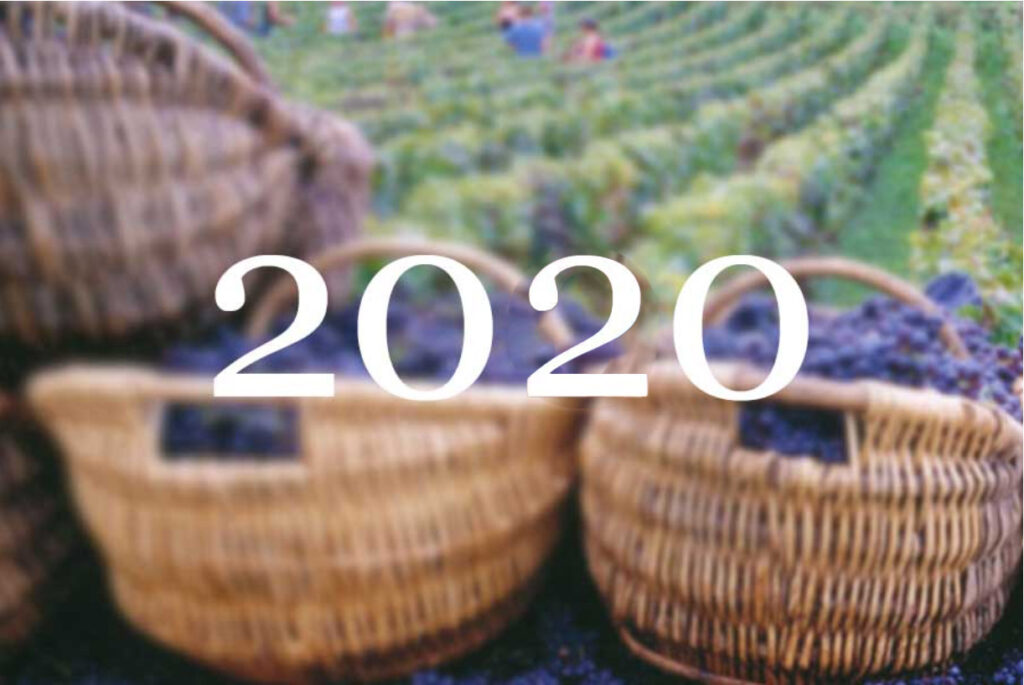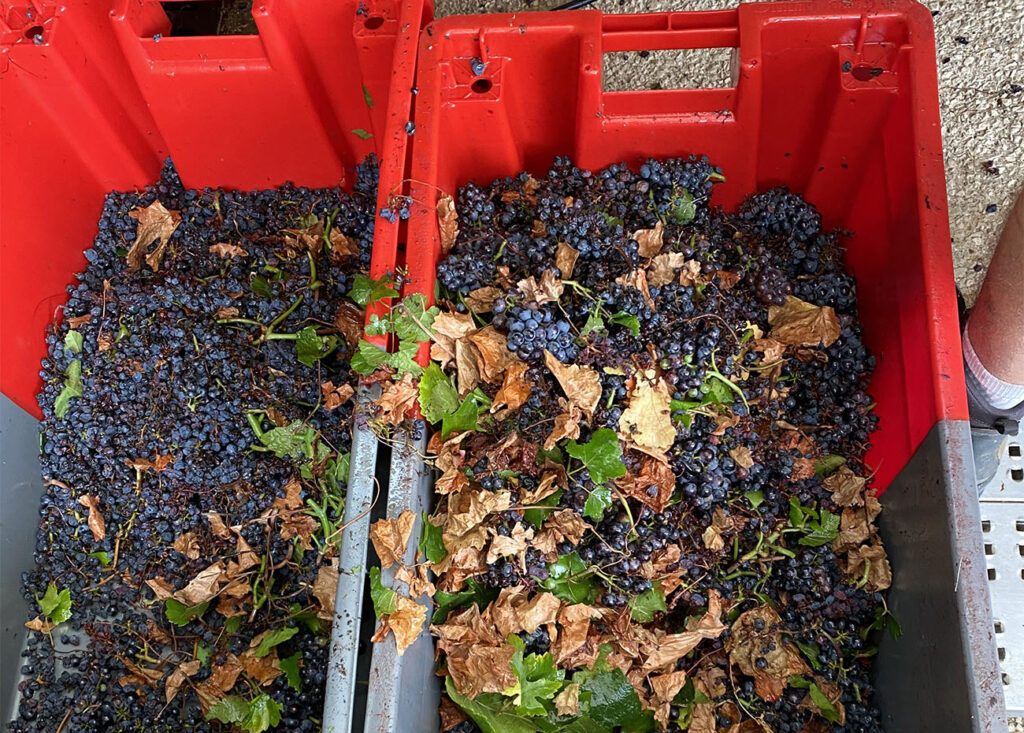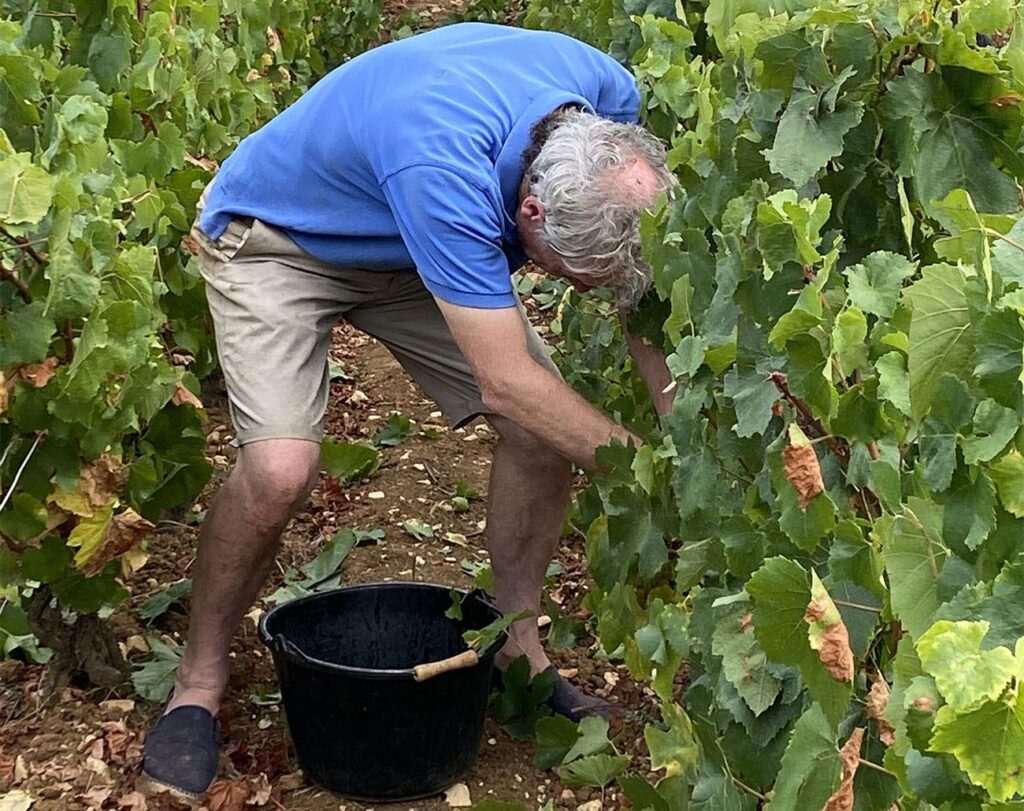2020 Vintage Weather Report

Written: December 2021
The weather

The 2019-20 winter was unusually mild and notably wet, with very regular rainfall rather than damaging deluges, fortunately. This was a considerable relief as it filled up the water table which the previous winter had not. February was colder, but still wet, and still without snow. Overall January and February were noticeably warmer than the average.
By mid March the picture changed and there was scarcely a single drop of rain from the imposition of Covid-19 lockdown through to the very end of April. At first there was a brisk north wind which left temperatures hovering around freezing with some close calls in the last few days of March and first few days of April in the vineyards, where the buds appeared exceptionally early.
Then, on Palm Sunday, 5th April, the wind swung round from due north to due south delivering the same brilliant blue skies but much greater warmth. “Another Fine Day in Paradise” we kept saying, despite being confined to barracks. For the rest of the month the wind oscillated between north and south, but eschewed any element of the west which brings humidity. The vines could cope, with their roots in the water table, but grass and surface crops were really suffering.
Right at the end of April the weather pattern did change with some westerly air currents bringing changeable weather and some rain, especially in the first half of May. Release from lockdown was greeted with a full day of rain on Monday 11th May, but from the following Sunday warm sunny weather returned, changing to cooler sunny weather towards the end of the month as a brisk north wind prevailed. By then the flowering had passed off under relatively good conditions, confirming expectations of a potentially large harvest.
Like the second half of May, June delivered a mixed weather pattern and it was slightly cool, very windy and occasionally damp during the flowering – not enough to damage the potential crop significantly, but in some instances may have limited yields. The weather warmed up noticeably at the end of the month,
As July wore on, so temperatures rose while the skies were somewhat cloudier than during the luminous spring. Rainfall was rare to non-existent and the warm dry wind did nobody’s temper any good. Nonetheless the vines continued in magnificent health. Various biodynamic producers told me that they had not had to do a single treatment using copper this year. Nonetheless, the extreme deficit of water in July would play out later in the style of the wines.

The heat spike around 31st July when the grapes were changing colour probably did the most damage, particularly on the southern side of Nuits-St-Georges where it turned into a hailstorm late in the evening. The crop which set at the outset was potentially really quite large, though slightly limited at the flowering. When growers left for a well-earned summer holiday (those that did manage to get away) the vines were looking really healthy, just needing a bit of rain!
When they came back they were not nearly so optimistic: the vines were looking parched, some leaves were starting to die off, and in a few instances the grape skins were starting to shrivel. As a result, many brought forward their picking dates: Arnaud Ente started on Monday 17th, Antoine Jobard and the Hospices de Beaune on Tuesday 18th, Etienne de Montille on Wednesday 19th, Dominique Lafon on Thursday 20th and Benjamin Leroux on Friday 21st, to cite a few of my regular harvest time visits. Sugars were reaching the required levels and acidity was still in place.
Those who have both colours brought in a small proportion of their white wines but mostly concentrated on the reds, which underwent veraison first and needed immediate attention, especially on lighter, drier soils. But despite the early harvest, the pips had ripened nicely which is a good sign, and there was perhaps a little more juice in the grapes than expected, though nothing like to the same degree as 2018.
There was a welcome shower during the night of Friday 21st/Saturday 22nd August, typically about 20mm in the Côte de Beaune – enough to refresh a little bit the vines and leave them damp underfoot in the morning – but too late for those vineyards where the leaves were already dying off. The rainfall on Friday 28th August and the morning of Sunday 30th certainly did some good, softening the skins of the grapes without changing the basic sugar and acid balance. Those who held out to wait for some rain in 2019 lost that gamble but in 2020 it may have paid off.

